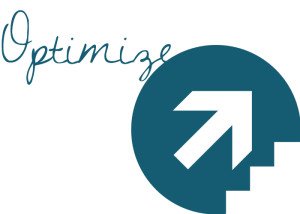How to Optimize Images for the Search Engines
4 minutes | Word Count: 610Since SEO can be so focused on the written word, people often forget that images can also be optimized for the search engines. Images are an integral part of any website’s SEO campaign not only because they can be optimized but also because they attract traffic and links. People have short attention spans and there’s nothing like a visually stimulating photo or graphic to grab their attention and get them interested in what you have to say.

In addition to breaking up your copy, adding distinctive images, and avoiding large blocks of text on your website, you ought to consider following these tips to optimize the graphics and images on your website. Most of these tips pertain to Google Image Search but Google makes up about 72% of all image searches so it’s certainly a good idea to focus on optimizing your images for Google.
1. Use the alt attribute
The alt text of an image contains a brief description of the image. Be specific, as if you were describing the image to a blind person. Alt text plays a significant role in getting an image ranked in search engines. Don’t just stuff your alt text with keywords. Make sure it’s readable and descriptive to humans as well.
2. Put your images on an authoritative hosting website
Websites like Flickr, Wikipedia, and Picasa are great places to put your images. Anytime you put an image on one of these sites, link back to your main website if possible.
3. Use the target keyword as the image file name
Make the keyword you are targeting the image file name. For example, if you are selling a funny beer t-shirt, make the image file name of the shirt something along the lines of “funny-beer-tshirt.jpg.”
4. Optimize the text surrounding an image
Search engines heavily weigh the text that surrounds an image so make sure the text above and below your images provide context and contain relevant keywords. If you can add tags or captions to your images and graphics, by all means do it.
5. Link images to articles or blog posts on your site
Link images on your website to relevant articles/blog posts on your website. Not only will this help you attract more traffic to content on your site, it will give your internal-linking efforts a boost.
6. Link to images on your website with relevant anchor text
Use anchor text that contains relevant keywords to link to images and graphics on your website.
7. Keep it fresh
If you are targeting highly popular keywords, some experts recommend re-uploading your images time and again since image freshness is a factor search engines use to determine relevancy.
8. Use the preferred image and graphic formatting
The preferred image format is .jpg. For graphics, use .gif.
9. Limit the number of images per page
Your images are more likely to get picked up by the search engines if there are fewer images per page on your website.
10. Create a separate folder for images
When adding images to your website create separate, search engine accessible folders for each image.
In conclusion, these are some ways you can optimize images on your website for the search engines. Currently, most of the focus in the SEO world is on traditional search but traffic via image search is continuing to grow, which will lead to the upcoming discovery and development of new image optimization strategies. And don’t just focus on optimizing images for the search engines either. Make sure you provide high quality images that are detailed, clear, and relevant so you can appeal to human visitors as well.
2 thoughts on “How to Optimize Images for the Search Engines”
Comments are closed.





















I value the article. Really looking forward to read more.
I think this is a real great article post. Much thanks again. Want more.